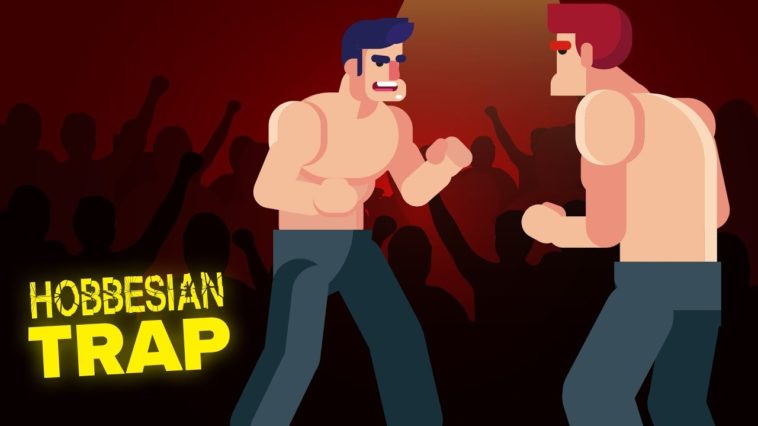Video Infographic : The Cold War – The Terrible History of ‘Hobbesian Traps’?
Video
Description
Hobbes believed that the natural state of man was not a noble savage that only became violent and corrupt after being influenced by society.
He believed our natural state was violent, and we required moral government to lead us on a better path. This is he what called a “Leviathan”, which was fully explained in his 1651 book titled with that name. Hobbes also wrote that there were three main reasons for war: competition, glory, and distrust.
We want other’s resources, we want power, and we know others do too, so we attack them with preemptive strikes. We do the damage before they can. That’s what we’ll talk about today, in this episode of the infographics show, The terrible history of ‘Hobbesian traps’.
Before we give you some examples of Hobbesian Traps let’s first explain what we are talking about. As we said, Hobbes believed that a big reason for conflict was fear of others. That fear might be overstated, understated, or it might not even have much of a foundation at all. You might see it in school even, when one person attacks another for no other reason that he thought that person would attack him first. That might have happened, but it might not have happened as well. The violence could have occurred simply because one faction was paranoid. But when you are competing for resources, and a strike against you when you’re not ready could ruin you, the drive to hit first might be very strong. This is talked about in game theory. You might think about cooperating with the other side, be it a country or a person, but then you believe the other might think you show weakness and attack you. So, you don’t try and cooperate and both of you harbor this mutual distrust. We would think the best thing to do would be to talk about it, but according to Hobbes part of human nature is not trusting each other. It’s kind of animalistic.
As you can guess, these traps of distrust we fall into have caused untold misery and bloodshed throughout history. Game theory goes a step further and talks about “loss aversion”, which basically means both sides suffer out of fear of losing. We might end up in a state of conflict because of distrust, but then carry on fighting because of the fear of losing. It can end up in a lose-lose situation, with perhaps one side winning what is called a “Pyrrhic victory”. That’s winning with so much loss that you could hardly call it a win. We have seen this in wars, but it can relate to all walks of life.
You’ve probably had this kind of painful win in your own life. We can give you a very simple example of a distrust conflict and a lose-lose situation. Maybe you and your brother are playing with something valuable in your house and it breaks. Your parents come home and are very angry. They want to know who did it. You both say nothing, but the holidays are coming, and you certainly don’t want to be grounded. Fear gets the better of you, you’re in a trap of distrust, and so you tell your parents he did it before he could say you did it. Conflict has broken out. He then starts telling your parents other bad things you did, smoking, cheating at school, fighting, and so you tell them all the bad things he did. The consequence is both of you get in lots of trouble and both of you get grounded. You resent each other and that feeling might fester for a time to come. Maybe they believe he broke the valuable item, but you both still lost in a way. You get the Pyrrhic victory. And all this because you both couldn’t cooperate. You might have gotten into some trouble, maybe not, but you certainly could have prevented a big mess. These conflicts happen large scale, and sometimes mean huge monetary losses and often human casualties.
SUBSCRIBE TO US -►
————————————————————————–
WEBSITE (SUGGEST A TOPIC):
SOCIAL:
Twitter……..►
Subreddit…►
————————————————————————–
Sources for this episode:



